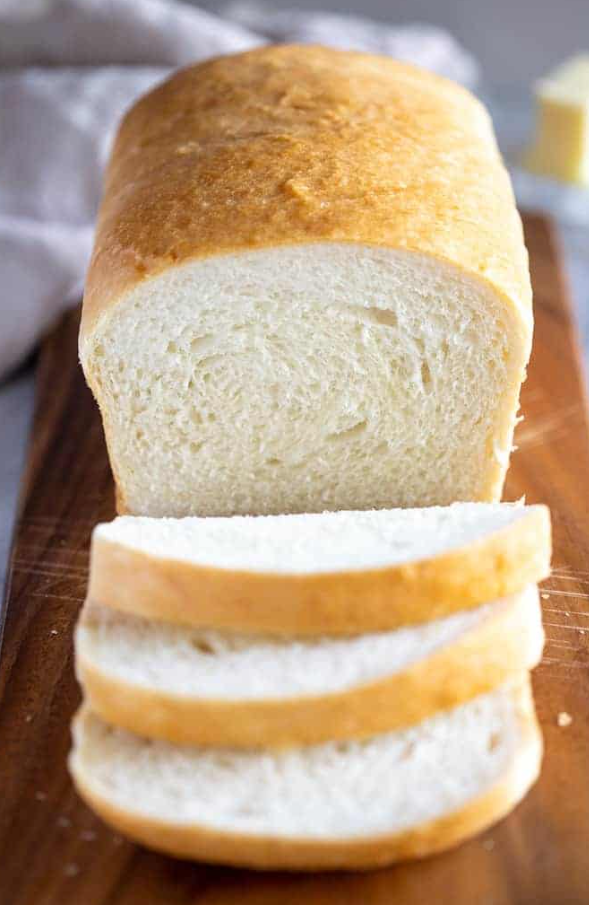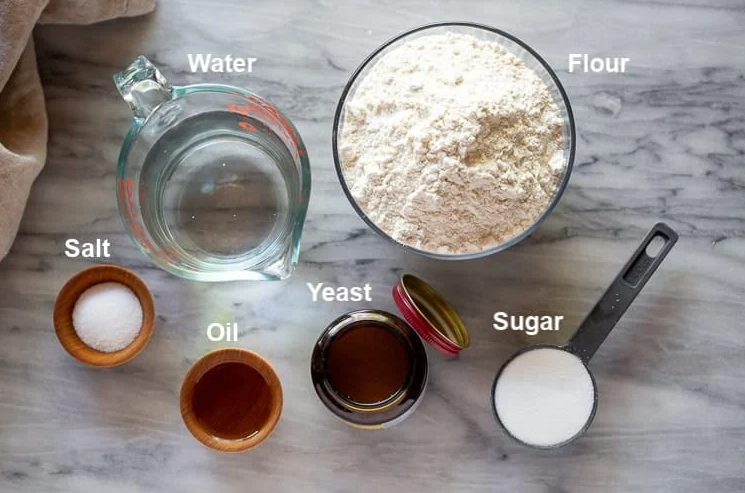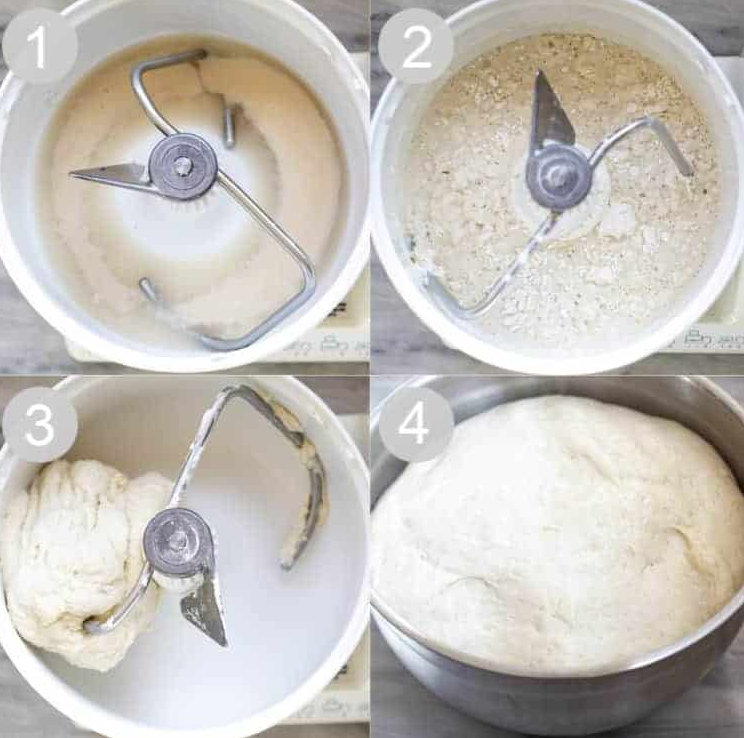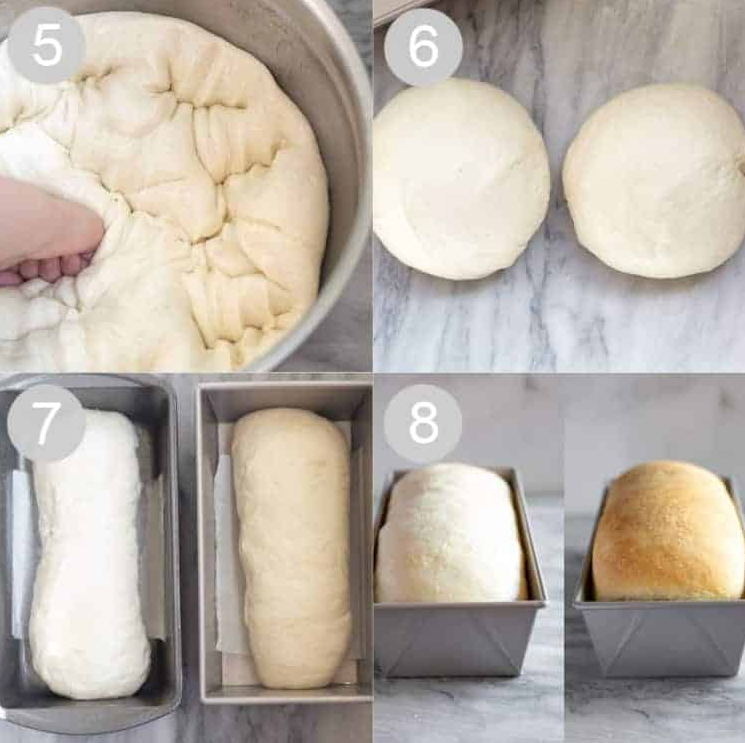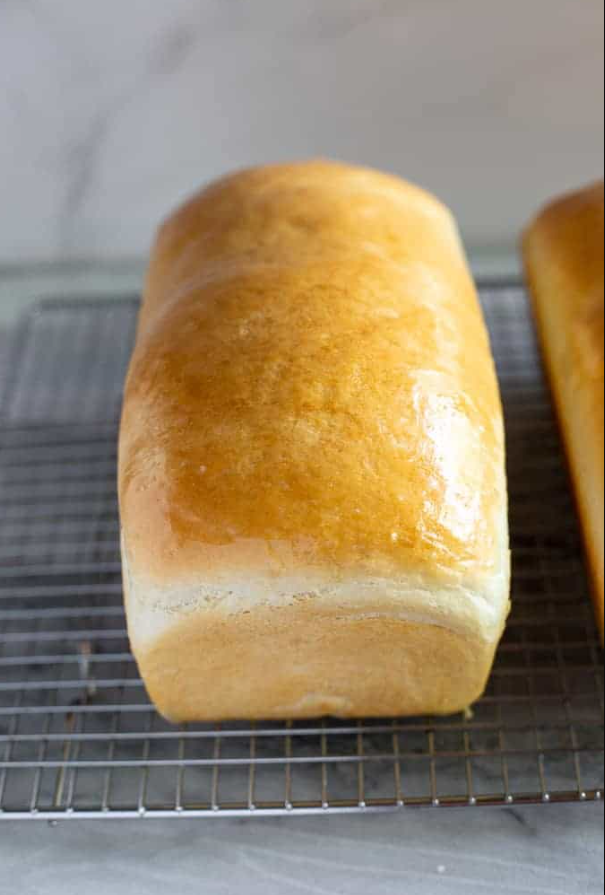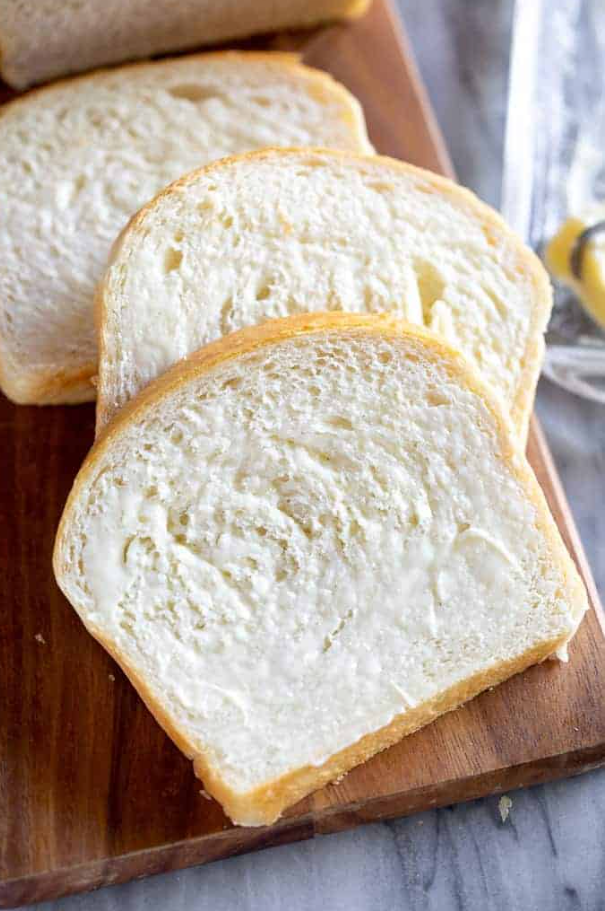Introduction:
There’s something special about the aroma of freshly baked bread filling your home, signaling warmth and comfort. For many, baking bread from scratch may seem daunting, but with the right recipe, it becomes a rewarding and achievable task. If you’ve struggled to find a bread recipe that consistently delivers excellent results, look no further. This homemade bread recipe is not only foolproof but also requires minimal effort, making it perfect for both beginners and seasoned bakers alike.
In this article, we’ll walk you through each step of creating two loaves of delicious homemade bread that are soft on the inside with a golden crust on the outside. From mixing the simple ingredients to shaping and baking the loaves, you’ll learn how to create bread that rivals your favorite bakery’s offerings. Get ready to fill your kitchen with the irresistible scent of freshly baked bread and delight your family and friends with this quick, easy, and utterly delicious recipe.
Ingredients:
- 2 cups warm water
- 1/4 cup sugar
- 1.5 tablespoons yeast
- 1.5 teaspoons salt
- 1/4 cup vegetable oil
- 5.5 cups all-purpose flour
These simple ingredients come together to create a delicious homemade bread that’s perfect for any occasion. Now, let’s move on to the step-by-step instructions for making this delightful loaf.
Instructions:
- Activate the Yeast:
- In a large mixing bowl, dissolve the sugar in warm water. Sprinkle the yeast over the water and let it sit for about 5-10 minutes until it becomes frothy. This process is called proofing the yeast.
- Prepare the Dough:
- Once the yeast is activated, add the vegetable oil to the yeast mixture and stir to combine.
- In a separate bowl, mix together the flour and salt.
- Gradually add the flour mixture to the yeast mixture, stirring continuously until a soft dough forms.
- Knead the Dough:
- Turn the dough out onto a lightly floured surface and knead for 3-5 minutes until the dough is smooth and elastic.
- First Rise:
- Place the kneaded dough in a lightly greased bowl, turning it over to coat both sides with oil. Cover the bowl with a clean kitchen towel or plastic wrap and let it rise in a warm, draft-free place for about 1 hour or until it doubles in size.
- Shape the Loaves:
- After the dough has risen, punch it down to release the air bubbles. Divide the dough into two equal portions and shape each portion into a loaf.
- Second Rise:
- Place the shaped loaves into greased bread pans. Cover them loosely with a kitchen towel and let them rise for another 30-40 minutes or until they have risen slightly above the edges of the pans.
- Bake the Bread:
- Preheat your oven to 350°F (175°C).
- Once the loaves have risen, bake them in the preheated oven for approximately 30 minutes or until they are golden brown and sound hollow when tapped on the bottom.
- Remove the bread from the oven and brush the tops with melted butter while they are still warm.
- Cool and Enjoy:
- Allow the bread to cool in the pans for a few minutes before transferring them to a wire rack to cool completely.
- Slice and serve the homemade bread warm with your favorite spreads or enjoy it plain.
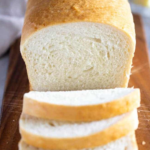
The Perfect Homemade Bread Recipe: Quick, Easy, and Delicious
- Author: Alex Morgan
- Total Time: 2 hour
- Yield: 2 loaves 1x
Description
This homemade bread recipe offers a fail-proof method to create two delicious loaves of bread. With just a few basic ingredients and simple instructions, you can enjoy the satisfaction of baking fresh bread in your own kitchen. From its soft, pillowy texture to its irresistible aroma, this bread is sure to become a favorite for any occasion.
Ingredients
- 2 cups warm water
- 1/4 cup sugar
- 1.5 tablespoons yeast
- 1.5 teaspoons salt
- 1/4 cup vegetable oil
- 5.5 cups all-purpose flour
Instructions
- Activate the Yeast:
- In a large mixing bowl, dissolve the sugar in warm water. Sprinkle the yeast over the water and let it sit for about 5-10 minutes until it becomes frothy. This process is called proofing the yeast.
- Prepare the Dough:
- Once the yeast is activated, add the vegetable oil to the yeast mixture and stir to combine.
- In a separate bowl, mix together the flour and salt.
- Gradually add the flour mixture to the yeast mixture, stirring continuously until a soft dough forms.
- Knead the Dough:
- Turn the dough out onto a lightly floured surface and knead for 3-5 minutes until the dough is smooth and elastic.
- First Rise:
- Place the kneaded dough in a lightly greased bowl, turning it over to coat both sides with oil. Cover the bowl with a clean kitchen towel or plastic wrap and let it rise in a warm, draft-free place for about 1 hour or until it doubles in size.
- Shape the Loaves:
- After the dough has risen, punch it down to release the air bubbles. Divide the dough into two equal portions and shape each portion into a loaf.
- Second Rise:
- Place the shaped loaves into greased bread pans. Cover them loosely with a kitchen towel and let them rise for another 30-40 minutes or until they have risen slightly above the edges of the pans.
- Bake the Bread:
- Preheat your oven to 350°F (175°C).
- Once the loaves have risen, bake them in the preheated oven for approximately 30 minutes or until they are golden brown and sound hollow when tapped on the bottom.
- Remove the bread from the oven and brush the tops with melted butter while they are still warm.
- Cool and Enjoy:
- Allow the bread to cool in the pans for a few minutes before transferring them to a wire rack to cool completely.
- Slice and serve the homemade bread warm with your favorite spreads or enjoy it plain.
- Prep Time: 15 min
- Cook Time: 30 min
Nutrition
- Calories: 250 kcal
- Sugar: 5 g
- Fat: 6g
- Saturated Fat: 1g
- Carbohydrates: 45 g
- Fiber: 2 g
- Protein: 5 g
- Cholesterol: 0 mg
Tips for Perfect Bread Every Time:
- Use Fresh Ingredients: Ensure your yeast is fresh and your flour is not expired for the best results.
- Proper Yeast Activation: Make sure the water is at the correct temperature (around 110-115°F or 43-46°C) to activate the yeast properly. Too hot water can kill the yeast, while too cold water won’t activate it enough.
- Consistency of Dough: Pay attention to the consistency of the dough. It should be soft, slightly sticky, and elastic. Adjust the flour or liquid as needed to achieve the right texture.
- Proper Kneading: Knead the dough until it’s smooth and elastic. This develops the gluten, which gives the bread its structure and texture.
- Rising Time: Allow the dough to rise in a warm, draft-free place until it has doubled in size. This may take longer in cooler environments.
- Greasing the Bowl: Make sure to grease the bowl well before allowing the dough to rise to prevent sticking.
- Punching Down the Dough: After the first rise, gently punch down the dough to release any air bubbles and redistribute the yeast.
- Shaping the Loaves: Shape the dough into loaves and place them seam-side down in the greased bread pans. This helps the loaves maintain their shape during baking.
- Proper Baking: Bake the bread in a preheated oven at the specified temperature until it’s golden brown and sounds hollow when tapped on the bottom.
- Cooling and Storing: Allow the bread to cool completely on a wire rack before slicing. Store leftover bread in airtight containers or plastic bags to maintain freshness.
By following these tips, you’ll be able to bake delicious bread every time, perfect for enjoying fresh or toasted with your favorite toppings.
Variations:
- Whole Wheat Bread:
- Substitute half or all of the all-purpose flour with whole wheat flour for a healthier option. Adjust the liquid as needed to achieve the desired dough consistency.
- Herb and Garlic Bread:
- Add dried herbs such as rosemary, thyme, or oregano, along with minced garlic, to the dough for a flavorful herb and garlic bread.
- Cheesy Bread:
- Mix shredded cheese, such as cheddar, mozzarella, or Parmesan, into the dough before shaping it into loaves for a cheesy twist on traditional bread.
- Seeded Bread:
- Sprinkle a variety of seeds, such as sesame seeds, poppy seeds, or sunflower seeds, on top of the loaves before baking for added texture and flavor.
- Sweet Bread:
- Add raisins, dried cranberries, or chopped nuts to the dough along with a touch of cinnamon and sugar for a sweet breakfast bread option.
- Multigrain Bread:
- Incorporate a combination of grains such as oats, barley, or quinoa into the dough for a hearty multigrain bread.
- Stuffed Bread:
- Roll out the dough into a rectangle, spread with your favorite filling such as pesto, marinara sauce, or Nutella, then roll it up and shape it into a loaf before baking.
- Spiced Bread:
- Experiment with spices like cinnamon, nutmeg, or cardamom to add warmth and depth of flavor to the bread.
- Sourdough Bread:
- Use a portion of sourdough starter in place of some of the water and yeast for a tangy sourdough flavor.
- Gluten-Free Bread:
- Substitute gluten-free flour blend for the all-purpose flour to make a gluten-free version of the bread. Adjust the liquid and rising time accordingly.
Frequently Asked Questions (FAQs) About Homemade Bread:
- Can I use active dry yeast instead of instant yeast? Yes, you can substitute active dry yeast for instant yeast in most recipes. However, you may need to activate it in warm water before adding it to the dough.
- Can I use whole wheat flour instead of all-purpose flour? Yes, you can use whole wheat flour, but keep in mind that it will produce a denser loaf with a stronger wheat flavor. You may need to adjust the liquid content slightly as whole wheat flour absorbs more moisture than all-purpose flour.
- How do I know when the bread is done baking? The bread is done when it’s golden brown on top and sounds hollow when tapped on the bottom. You can also use an instant-read thermometer to check that the internal temperature is around 190-200°F (88-93°C).
- Why did my bread not rise? Several factors can affect the rise of bread, including inactive yeast, too much salt, too much flour, or not enough rising time. Make sure your yeast is fresh and active, and follow the recipe instructions carefully.
- How do I store homemade bread? Once cooled, store homemade bread in a plastic bag or airtight container at room temperature for up to 3-4 days. You can also freeze bread for longer storage. Slice it before freezing and thaw individual slices as needed.
- Can I add other ingredients to the bread dough? Absolutely! Feel free to get creative and add ingredients like herbs, cheese, nuts, or dried fruits to customize your bread. Just be mindful of how additional ingredients may affect the texture and rise of the bread.
- Can I double the recipe to make more loaves? Yes, you can double or even triple the recipe to make more loaves of bread. Just make sure you have enough space for the dough to rise and adjust the baking time accordingly.
- Can I use a bread machine to make this recipe? While this recipe is designed for traditional oven baking, you may be able to adapt it for a bread machine by following the manufacturer’s instructions for ingredient order and program settings.

